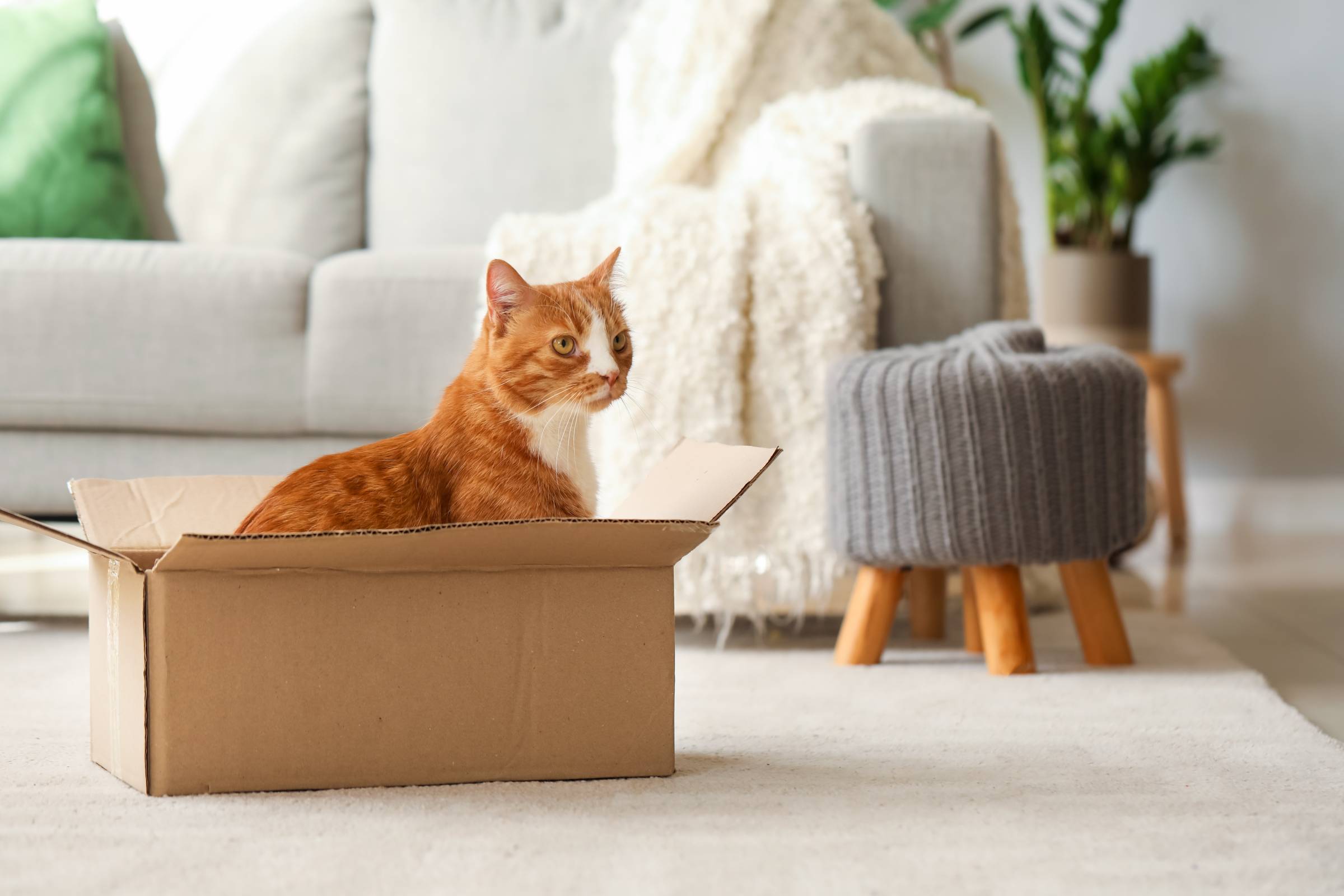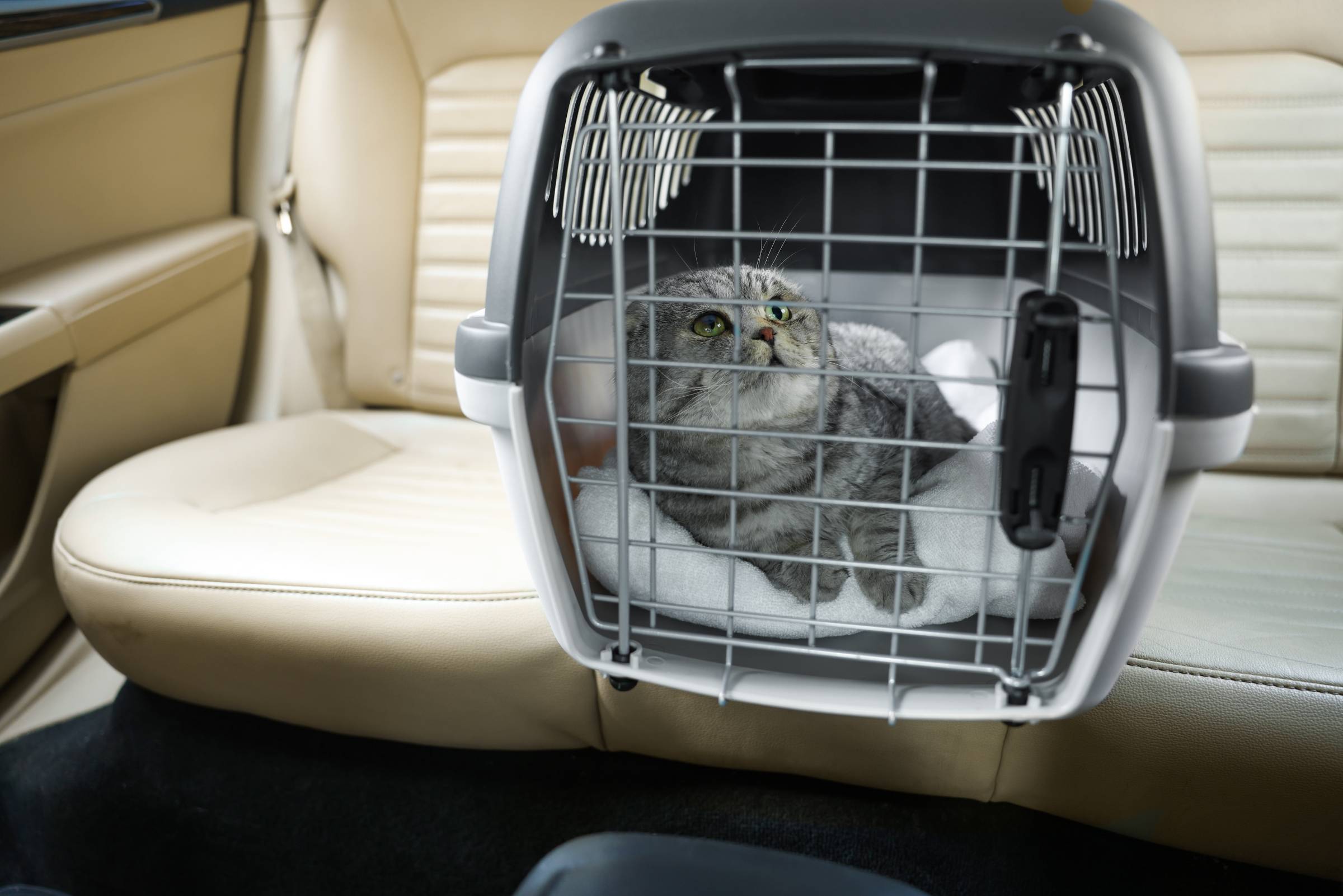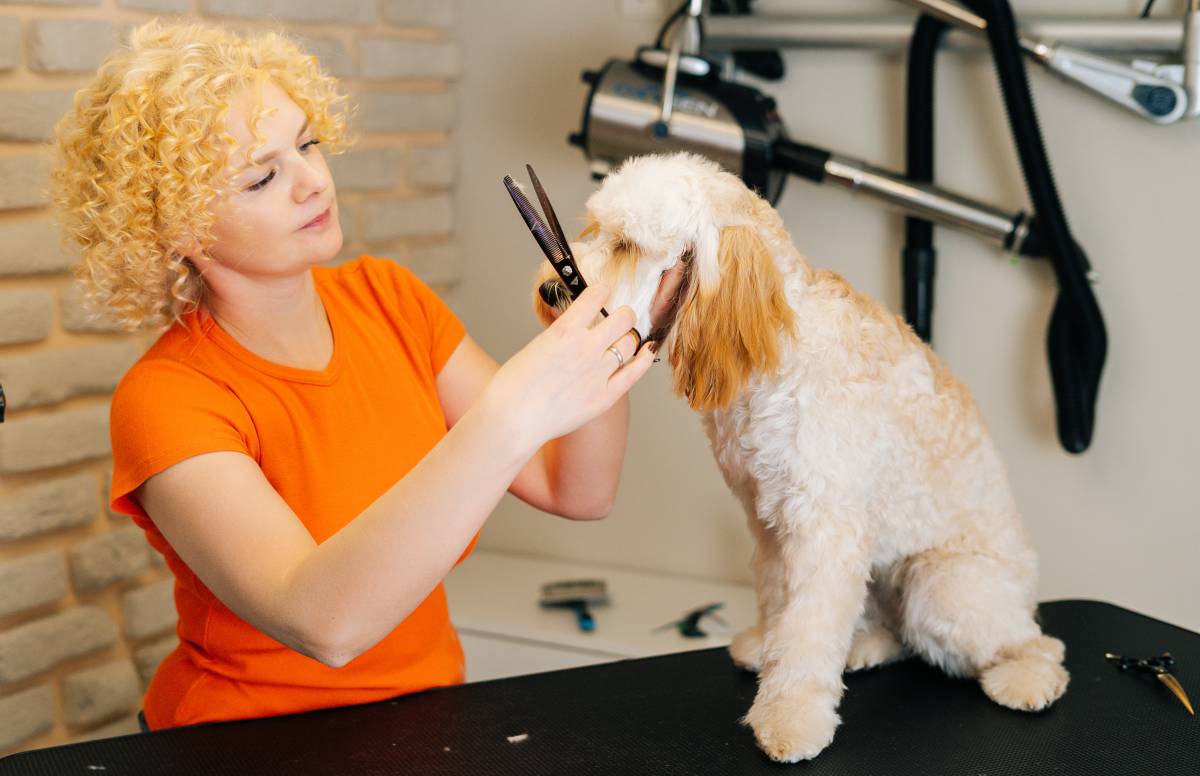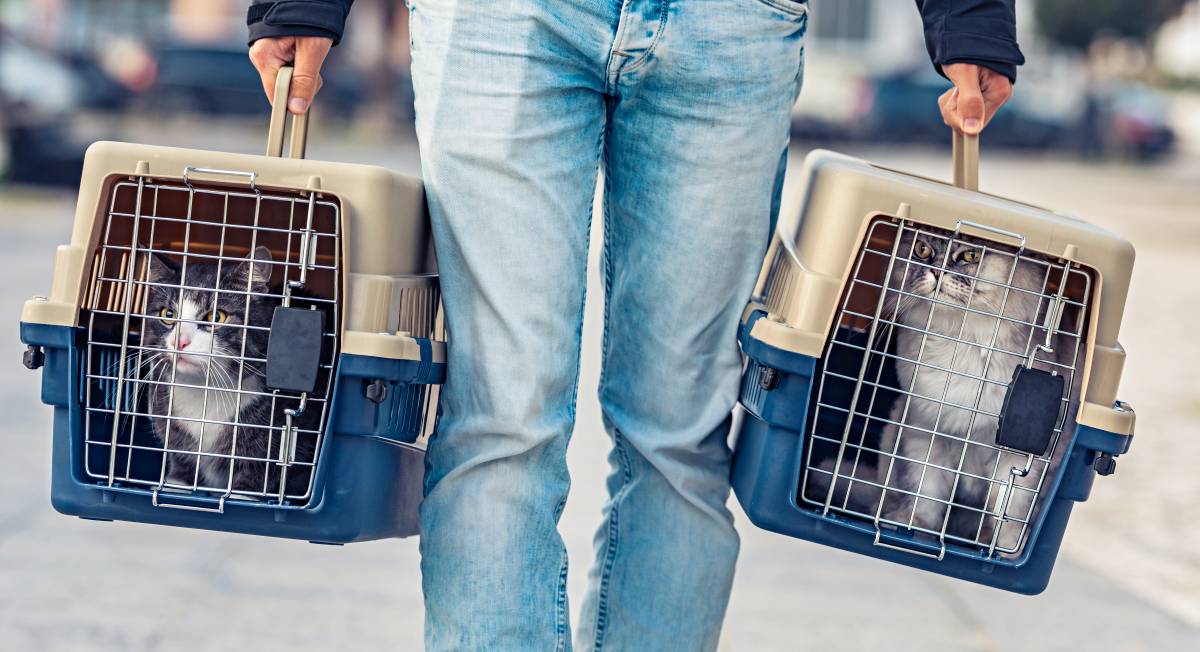- Home/
- Checklists/
- Pet Transport/
- Moving with Cats

Your checklist guide to moving with cats
Help your cats feel at ease in your new home.
Get moving helpLast Updated on
Do you feel a little worried about your upcoming house move? Transferring homes is a big enough task, but moving with cats is even more challenging. Whether it’s a short or long journey to get to your new home, you must remember that a cat stressed from moving means you also get frazzled along the way.
It sure helps to have a friendly pet transport expert for the process. But if you can’t find one, here are some helpful tips for moving with a cat.
Everything you need to know about moving with cats
What to do before moving cats to a new home
☐ Choose the right type of pet carrier
The first thing to do when preparing cats for a move is to get a travel carrier. But getting the right one is critical to your cat’s comfort and safety. It should also have enough room for your cat to stand, turn around, and move easily. If you have more than one cat, get an extra-large one to fit them.
☐ Introduce the travel carrier
Let your cat warm up to the pet carrier when you get it. Don’t wait until moving day! Cats need time to acclimate, so you can leave the carrier lying around the house days or weeks before the move. Keep the door open and let your cat become familiar with it. You can also put a blanket inside to make it cozy.
☐ Gradually pack your belongings
Cats are creatures of habit. It can upset or stress them if they suddenly see adjustments in the home. Try to pack your things little by little to prevent overwhelming your cat with abrupt changes. For hard-to-pack items like furniture, you can find a professional packer to assist you.
☐ Ensure your cat’s safety
Keeping your cat in a separate room is important if you’re working with movers to help with the transfer. This will prevent instances like your cat knocking down things, causing accidents, or bolting out the door. Have your cat’s essentials in the dedicated room, and post a note on the door to let movers know there’s a cat inside. You can even opt for a cat sitter to look after them while you're packing if you have some extra budget.
☐ Update your feline’s identification
When moving cats to a new home, a commonly overlooked task is changing their ID tags. Doing this is crucial so it’s easier to identify and bring your cat back to you in case of a runaway or slip-away incident. You may also choose to have your cat microchipped.

How to move with cats: 4 things you should know
1: Be ready for motion sickness
Cats can get motion sickness. Some of the signs are heavy drooling, vocalization, and vomiting. Hence, skipping the heavy meal and going for something light before the trip will help settle the stomach. If your cat has a history of motion sickness, consult your veterinarian for medications.
2: Have your cat’s essentials on board
Ensure your cat needs everything, including food, water, bowls, pillows, and blankets or towels. You can also add your cat’s favorite toy to the carrier. Knowing how to make a move less stressful for cats includes bringing items with familiar scents to aid in self-soothing. Don’t forget your cat’s other things, such as a pet harness, leash, vitamins or supplements, and medications (if any).
3: Take breaks for long drives
Ideally, traveling in a private vehicle or hiring a pet-friendly taxi is best. You can go on multiple stopovers if the trip takes several hours. You can walk your cat out on a leash and allow for some stretching time. Breaks are also helpful if your cat gets motion sickness or anxious in the car.
4: Consider pheromones for your cat
Pheromones are chemicals cats produce and use to communicate with each other. Cats generally feel a sense of comfort and familiarity with the presence of pheromones. Catnip is an herb that acts like a cat pheromone, producing positive and happy feelings. You can buy pheromone sprays, catnip leaves, or balls from local pet shops.

How to transition a cat to a new home
Start small
Don’t overwhelm your cat by exposing them to a large unfamiliar territory. You can ease into the transition stage by introducing a small room first. Remember to secure doors and windows to prevent any runaway mishaps.
Be patient and do what you can to help
Moving stress on cats is real and can take a toll on them. Give your cat time to adjust, but most importantly, share extra TLC. You can try dabbing a clean cloth on your cat’s face, then wipe it around the new home or spots that cats usually rub against. This will help your cat feel more at home. Pheromones or catnip is also a good way to calm a stressed cat after moving.
Bonus tips
If you’re moving an older cat to a new home, it’s best to be extra patient and accommodating to their needs. Senior cats may be more sensitive, stubborn, or difficult to travel with. Watch out for your feline friend and keep the travel as stress-free and peaceful as possible.
You can still apply the tips above when moving cats across the country. But be more mindful and have an extra supply of essentials to make up for the long trip. Find a pet-friendly hotel or accommodation if needed.
A happy cat means a happy move
Moving and settling into your new nest isn’t exactly a walk in the park. But the tips discussed here should help you on your way. Call up a reliable house mover to make the moving process even smoother. You can also hire a pet transport service to ensure your feline friend is in good hands. Sign up on Airtasker and get the helping hand you need today!
FAQs on moving with cats
Cats are habit-forming animals, so moving can be stressful for them. Some cats may be able to adjust faster, while others take longer.
It can take a few weeks for your cat to settle down and feel safe in a new home. Remember to be patient and supportive!
Cats are reluctant to move and make changes. But that doesn’t mean they can’t adapt to a new home. It simply takes time.
It’s possible, especially if they have experienced a long, exhausting journey. That’s why keeping your cats as comfortable as possible during your move is crucial.
It’s normal for your cat to be hostile after moving. They can even seem depressed or distant. But things should return to how they were once your cat has adjusted.
Find pet transport experts, fast
Post a task
Related articles
Related price guides





